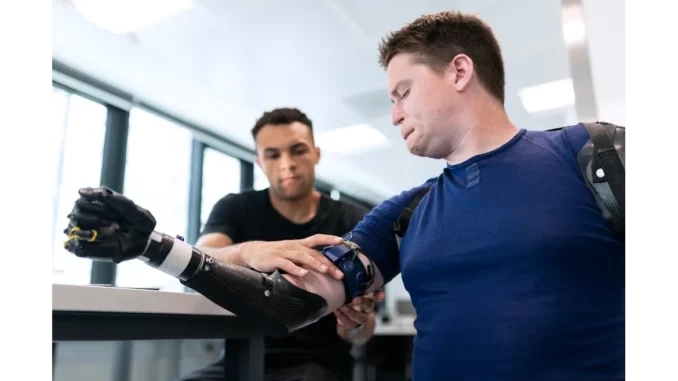
The landscape of Morgantown was alive with anticipation as medical professionals convened at the Morgantown Marriott at Waterfront Place for the WVU Medicine Robotics Summit. This gathering was not merely a display of technological achievements; it was a profound exploration of the transformative impact robotic surgery is having on the medical field. Among those present was Dr. Emily Carter, a seasoned surgeon and an ardent proponent of robotic-assisted procedures. Her insights offered a vivid depiction of the summit and illuminated the implications for the future of surgical practice.
Dr. Carter’s journey with robotic surgery began more than a decade ago, and her enthusiasm for the field remains undiminished. “When I first encountered robotic surgery, it seemed like something out of a science fiction novel,” she reminisced with a laugh. “However, witnessing the da Vinci system in action was a revelation.” At the summit, the da Vinci 5 robotic surgery system took centre stage. This sleek, headless robot, with its multi-jointed arms poised for precision, epitomised the technological advancements achieved over the years. “It’s remarkable,” Dr. Carter observed. “The DV 5 system boasts approximately 150 technological enhancements over its predecessor, the da Vinci Xi. It’s akin to upgrading from a bicycle to a high-speed train.”
A standout feature of the DV 5 is its force-feedback pressure-sensitive technology, a revolutionary innovation that Dr. Jason Fromer, an area vice president for the Eastern U.S., explained during his presentation. “Traditional robotic systems required surgeons to rely on visual cues to assess the pressure on tissues,” Dr. Carter elaborated. “Now, they can actually feel the pressure through the hand controls. It’s a game-changer, allowing for more delicate tissue handling and reducing the risk of damage.”
The benefits of robotic-assisted surgery extend far beyond technological advancements. Dr. Kristy Ward, WVUM’s Robotics Director, emphasised that robotic surgeries lead to improved patient outcomes. “Smaller incisions result in less pain and quicker recovery times,” Dr. Carter concurred. “It’s not solely about the surgery itself; it’s about enabling patients to resume their lives more rapidly.” Dr. Carter recounted a particularly touching story of a patient who underwent a robotic-assisted hysterectomy. “She was back on her feet within a week,” Dr. Carter shared with a smile. “Her swift recovery was astonishing, and stories like hers are why I advocate for robotic surgery.”
Robotic procedures also present a compelling case for cost efficiency. Dr. Carter noted how these procedures can reduce overall hospital costs. “It’s a win-win situation,” she said. “Hospitals can save money, and those savings can be reinvested into enhancing patient care.” The summit further highlighted the broader impact of robotic surgery in West Virginia. WVUM has been at the forefront of this transformation, significantly increasing the number of robotic surgeries performed in recent years. “It’s impressive,” Dr. Carter acknowledged. “In just a few years, they’ve raised their robotic surgeries from 20% to 60%. This is a testament to the technology’s efficacy and the dedication of the medical staff.”
Dr. Meghan Turner’s presentation on ENT surgeries was particularly enlightening. She described how robotic systems have revolutionised procedures for tonsil cancer, eliminating the need for invasive techniques. “It’s incredible what we can achieve now,” Dr. Carter commented. “The precision and minimal invasiveness of these procedures are unmatched.” As the summit concluded, discussions naturally turned towards the future. WVUM’s commitment to expanding its robotics programme was evident, with plans to acquire additional systems and train more surgeons. “It’s exhilarating to be a part of something so transformative,” Dr. Carter remarked. “The potential to improve healthcare outcomes in West Virginia is immense. We’re not just treating patients; we’re changing lives.”
Reflecting on the summit, Dr. Carter expressed optimism and hope for the future. “The broader picture is clear,” she concluded. “Robotic surgery is not only the future; it is the present. And it’s making a significant difference here in West Virginia.” The WVU Medicine Robotics Summit was more than an event; it was a glimpse into the future of healthcare—a future where precision, efficiency, and patient welfare are paramount. Conversations with Dr. Carter underscored that this is only the beginning of a new era in medicine, an era where the boundaries of possibility continue to expand.


Be the first to comment